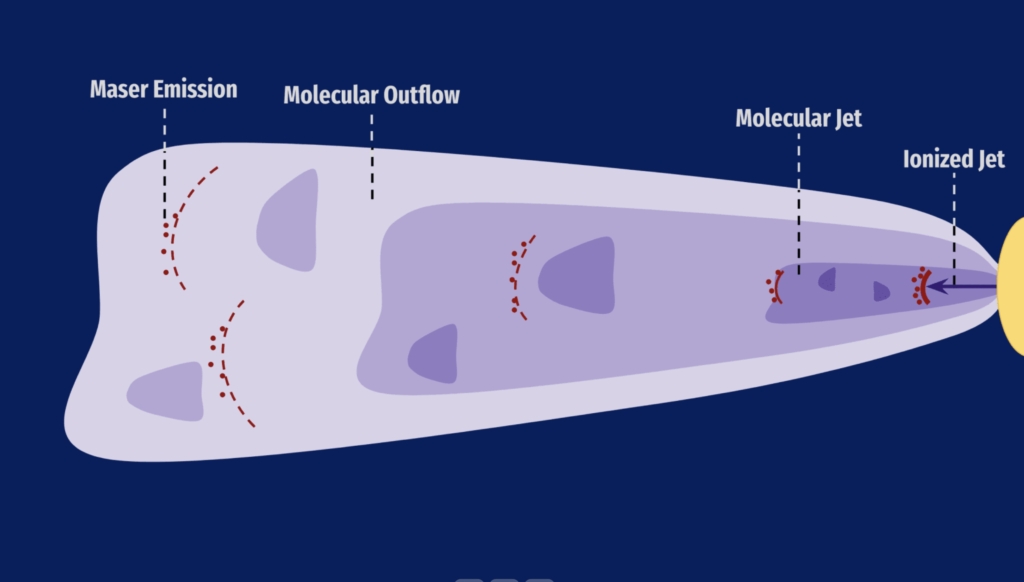The Jets and OUtflows Revealing the Nature and Evolutions of massive YSOs (JOURNEY) Project aims to better understand High Mass Star Formation (HMSF). It is also a collaborative project where graduate, undergraduate, and high-school students can work together to learn more about astronomy and how astronomical research is done. The origin of massive stars is complex and still not fully understood, so JOURNEY took a multi-scale approach, where a range of regions and phenomena were examined to better understand HMSF as a whole.

The various regions of a protostellar jet. Credit: Tatiana Rodríguez.
Tatiana Rodríguez, a graduate student at New Mexico Tech, presented a range of findings from the JOURNEY Project. For example, using data from the Arecibo telescope, and B and D configuration observations from the Very Large Array (VLA), Tatiana studied molecular outflow regions of a high-mass protostar. Molecular flows are seen in regions greater than a parsec away from the protostar. She observed broad absorption lines from hydroxide molecules. These lines were blue-shifted, indicating they were part of the flow. Tatiana also observed broad emission lines caused by ions recombining with electrons. Together, this suggests the molecular outflow is being ionized from the inside out by a newly formed HII region.
This work shows how massive protostars can significantly affect the surrounding environment, which impacts both astrochemistry and the formation of other stars. Tatiana presented this work at AAS 242.






